-
Posts
809 -
Joined
-
Last visited
Content Type
Profiles
Forums
Blogs
Gallery
Events
Store
Posts posted by Yankee
-
-
Long ago and two HD crashes (with subsequent loss of many images) I had two of these private-purchase dedication pieces. One was a long service cross to an officer in a regular army unit the other was an MVK in a dedication case but nothing on the cross itself.... I have always found these A-H private pieces to be fascinating as well of superior quality.
Thanks for showing two very rare pieces in one thread!!
Hi Stogieman
Pity your pictures are lost forever, each inscribed piece is most unique. There is a book on the long service decoration from 1849-1989 by Jorg Steiner unfortunately it is out of print. I agree the quality is most superb & the gold and silver -gilt ones are considerably more heavy then the standard issue gilded bronze pieces. Possible with the right research you can figure out who the recipient was. I think they are scarce, have not seen too many unless they are more plentiful in Europe.
Sincerely
Yankee
0 -
-
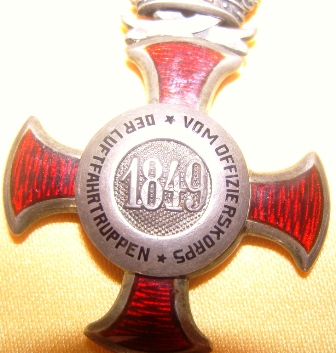
Close up of the dedication.
Kevin in Deva.

Hi Kev
That is a
 surprise to see a silver merit cross inscribed to the Air Force. Your piece dates from 1915-18 prior to the LUFTFAHRTRUPEN the service was called LUFTSCHIFFERABTEILUNG which came into existence in 1912. Yours is a wonderful example of superb workmanship
surprise to see a silver merit cross inscribed to the Air Force. Your piece dates from 1915-18 prior to the LUFTFAHRTRUPEN the service was called LUFTSCHIFFERABTEILUNG which came into existence in 1912. Yours is a wonderful example of superb workmanship  I will put up a larger scan later this evening. Perhaps we can start a
I will put up a larger scan later this evening. Perhaps we can start a  thread of only inscribed Orders, Medals & Decorations, this fascinating area of the hobby would certainly warrant such a dedicated thread.
thread of only inscribed Orders, Medals & Decorations, this fascinating area of the hobby would certainly warrant such a dedicated thread.Sincerely
Yankee
0 -
Thanks for the kind comment, amazingly the case is in fine shape after nearly a century. Now I need to find one from the Navy branch,
 curious to see how they were dedicated on the reverse. ` As a rule the infantry regiments were inscribed on the reverse center with a silver-gilt disc?
curious to see how they were dedicated on the reverse. ` As a rule the infantry regiments were inscribed on the reverse center with a silver-gilt disc?Sincerely
Brian
0 -
Dear Gentlemen
Here is an example of a 3rd class MVK decoration awarded to the airship service. Does anybody know if the rolls still exist for this service & a list of names?
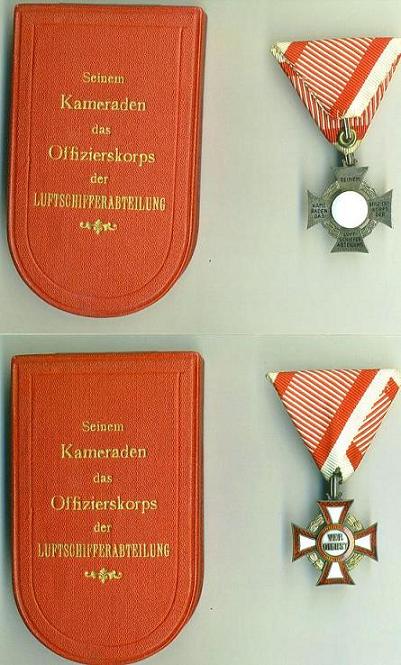
 0
0 -
Hi Yankee,
Have you posted this piece before? I have seen it, or one just like it, somewhere. Obviously it is not a standard issue piece and I seriously doubt that it is an intentional fake produced for the collector?s market.
That leaves at least two other possibilities. The first would be that it is a spangenstuck. I would point out, however, that from what I have seen over the years, spangenstuck invariably have plain (without detail) metal reverses. The other possibility that comes to mind is that it could be a sales display piece.
Any other ideas out there?
Regards,
Wild Card
P.S. As you know, but for the benefit of others, the ribbon is incorrect.
Hi Wild Card
I had posted this exact one last year to be ID & nobody knew for sure why it was manufactured as such, but it was worth a shot since there are a lot of international collectors on this forum. Some very advanced collectors have examined this badge over the years and were unable to explain it. My best guess would be a prototype but that is only my feelings. A thread for the unexplained would be sometning worth considering. Thanks for your input.
Sincerely
Yankee
0 -
-
My odd ball contribution to this neat thread
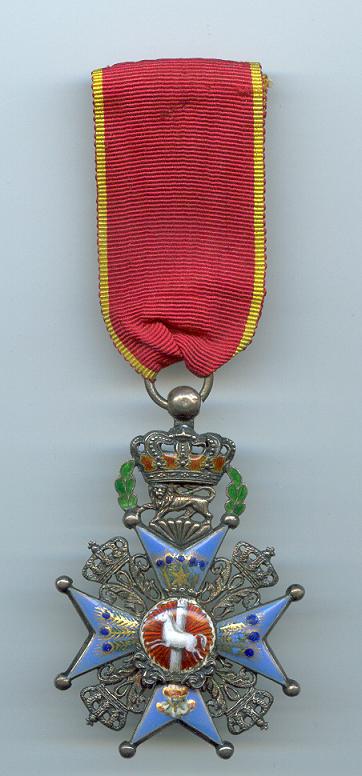
 0
0 -
Continuing the discussion about the Grand Cross, I'm posting two badges of old manufacture; the first of a very early type, with a simple ring suspension (the crown was fixed to the sash ribbon); the second, of the same period, but "updated" in the 1st half of XIX Century, by order of the Chancellery: in this case, the original uniface crown was modified adding a long suspension ring and a smaller loop to link it to the cross.
The obverse:



 18th century twins.0
18th century twins.0 -
Hi Matthias
Take a close look at post 3 and there you will find a detailed foto of the interior case, you will notice how the sword hilts sit directly on the cross. Your example would be impossible to fit into the case by Wennberg ( post 3) due to the link between the rectangular loop and sword hilt ( swords not resting directly on cross ). Take a look at your case and there should be a different layout. Possible the jeweler changed his design in last months of operation in 1915 as the case would show.
Sincerely
Brian
0 -
Hi Matthias
Take a close look at post 3 and there you will find a detailed foto of the interior case, you will notice how the sword hilts sit directly on the cross. Your example would be impossible to fit into the case by Wennberg ( post 3) due to the link between the rectangular loop and sword hilt ( swords not resting directly on cross ). Take a look at your case and there should be a different layout. Possible the jeweler changed his design in last months of operation in 1915 as the case would show.
Sincerely
Brian
0 -
They were given to the aristocracy, especially the Hungarian nobility for civil service in the highest degree. There are three classes: Grand CrossWhat were they awarded for? How many classes were there?Commander
Knight
Sincerely
Brian
0 -
Hi Enzo
Two sets what a fantastic
 surprise. Was it the norm that high ranking clergy would receive the St.Stephen?
surprise. Was it the norm that high ranking clergy would receive the St.Stephen?Always thought it was reserved for the nobility & royalty. Can you tell us about Cardinal Giuseppe Taliani, certainly must have been a very important figure to receive such a high honor. Thanks
Sincerely
Brian
0 -
Hello,
I would like to start a discussion about this high Austro-Hungarian Order, beginning with a curious piece: a Grand Cross breast star of British manufacture.
The diameter is 7,1 cm., quite smaller than usual; the short "flamed" rays are gilt.
The pin is made of gold and on the reverse medallion there is the engraved mark of "Wm. Gray Jeweller 13. New Bond St.".
I know that collectors like "official pieces" more than such foreign-made pieces, but I find this star and highly attractive.
Best wishes,
Enzo
Obverse side:
Hi Enzo
That is one very early 1800's beautifully detailed made star

 I for one like foreign made stars , much more interesting & much more seldom encountered. It seemed to be an English trademark to use the gold pin, certainly spared no expense. All you need now is to find the badge
I for one like foreign made stars , much more interesting & much more seldom encountered. It seemed to be an English trademark to use the gold pin, certainly spared no expense. All you need now is to find the badge  ..
..Sincerely
Brian
0 -
Hello,
Prochazka ("Oesterreichisches Ordenshandbuch", 2nd edition, vol. 2, pages 61-62) describes the Kanonenkreuz under no. 312. It is the piece awarded to all the Austrian military involved in the "Befreiungskriege" against Napoleon.
No. 313 is the piece especially awarded to Karl, prince Schwarzenberg (the piece is on display at the Austrian Army Historical Museum in Vienna); the size is 50 x 45 mm., larger than the piece in this discussion.
No. 313a is the piece here shown. Prochazka thinks that it could have been a never introduced "Cannon Cross for higher-ranking officers". The author repeated in his book the mistake reported both in the first Julius auction Catalogue (Otto Helbing, M?nchen, 1926, page 280, lot 3620) and in the definitive one (M?nzhandlung R. Gaettens, Heidelberg: "Sammlung Julius - Franz?sische Revolution - Napoleon I. und seine Zeit... II. Teil 1809-1815" 14 - 16 September 1959, page 41, lot 3540. By the way, this lot, with an estimation of 40,- German Marks, was sold for 30,-...), where the cross was described with almost the same words then used by Prochazka.
It seems that he didn't pay attention to both v. Heyden's book and to his description in the catalogue where the collector put his decorations for sale (in the v. Heyden auction, 1898, the piece was sold for 20,- Reichsmark). Now, we see once more, what a wrong auction catalogue's description could do...
The fact that the piece is entirely hand-made and not struck, allows us to confirm the thought of other authors stating that it is the prototype of what -later- became the Kanonenkreuz. Noteworthy, the piece bears the year 1813 only, instead of the definitive 1813-1814.
I've forgot to mention that this piece was also studied -and published- by V?clav Měřička in the early '70s in a Czechoslovakian Numismatic bulletin (pages 23-31: "Zaj?mavosti o dělov?m Kř??i a občansk?m kř??i z let 1813 a 1814").
This cross, is an historical curiosity, and we should consider it under this point of view, besides its rarity (or uniqueness).
Best wishes,
Enzo
Hi Enzo
I didn't know there was a second edition, explains why I could not find any info on his first book. I missed that roman numeral around the first time
 , thanks for bringing it to my attention. Having the date 1813 only would signify that it was intended to have been awarded that year for the "wars of liberation" however the war extended into the following year and the cross was most likely shelved for that reason. Another possibility that it was going to be awarded that year ( 1813 ) and the intended high ranking recipient had already been killed prior receiving of decoration & again it was shelved. 20 reichmarks must be a kings ransom back then. Really neat piece of history
, thanks for bringing it to my attention. Having the date 1813 only would signify that it was intended to have been awarded that year for the "wars of liberation" however the war extended into the following year and the cross was most likely shelved for that reason. Another possibility that it was going to be awarded that year ( 1813 ) and the intended high ranking recipient had already been killed prior receiving of decoration & again it was shelved. 20 reichmarks must be a kings ransom back then. Really neat piece of history 
Sincerely
Brian
0 -
Prochazka states one being awarded to Prince Schwarzenberg in 45mm. The foto looks exacly like yours in every detail including loop & ring....
0 -
Reverse side:
Never seen one of these before. What a wonderfully detailed cross, perhaps a special presentation to a military commander or a prototype
 that never got off the ground. Thanks for the view.
that never got off the ground. Thanks for the view.Sincerely
Brian
0 -
-
-
Probably you have the reason...the "must have" of today will be the "must sell" of tomorrow...
The problem is that some days ago I?ve lost an auction with a perfect St. Heirich in the nick of time...so the thing is burning slowly undersurface...
Regards
Miguel
Hi Miguel
That St. Henry is a bit scarieeee
 . As I recall a few weeks ago Liverpool had one in a group with the signature "F.U." looked to be a nice Saxon group but I'm no expert. I'll try later to scan you an official piece to compare & it came from Liverpool.
. As I recall a few weeks ago Liverpool had one in a group with the signature "F.U." looked to be a nice Saxon group but I'm no expert. I'll try later to scan you an official piece to compare & it came from Liverpool. Sincerely
Yankee
0 -
Yes indeed, I am much better too
 .....I think you already know what is in the package...
.....I think you already know what is in the package...  Give my new birdie a hug for me.
Give my new birdie a hug for me. 
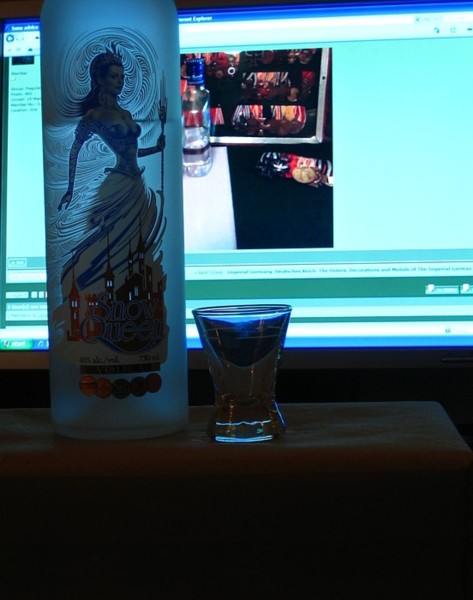
What a bottle

Now that would really make an interesting hobby...
0 -
...and here are the pictures (hopefully better resized than my other attempts...)
The obverse face:
Hi Enzo
To see the medal and orginal chain is an absolute delight

 . That must be one heavy necklace, Mr "T" would be jealous of that one. Whose signature is below the bust? It would be a dream to hold one of those, you probably don't want to let go & you can always keep it under your shirt. All the best.
. That must be one heavy necklace, Mr "T" would be jealous of that one. Whose signature is below the bust? It would be a dream to hold one of those, you probably don't want to let go & you can always keep it under your shirt. All the best.Sincerely
Brian
0 -
Unfortunately Anhalt's 1914-18 award rolls have either been destroyed or are lost and have yet to be found.
Impossible to identify this one as well
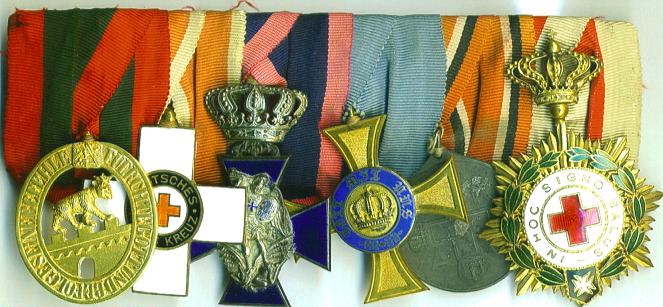
 0
0 -
The Saxon St. Henry Medal (as well as the Verdienst Order medals), if the official issue, will have the F.U. maker mark under the bust. A small number of medals were struck during the 1870 conflict by Rothe in Wien, Austria and bear their mark under the bust.
Any medal found without the signature is a copy of some kind. (Yes, that includes "spangen-stuch" medals of the period, still a copy no matter how you look at it).
Interesting to note there was even a smaller amount awarded in 1848/49 by Ulbriht. As I recently learned from a fellow member they are identical to the later pieces from 1914-18. I suppose one can argue that the Ulbriht example are more rare (1848 - 49) then the Rothe issue. Think twice before selling of your St.Henry might just have one of those old ones!!!
0




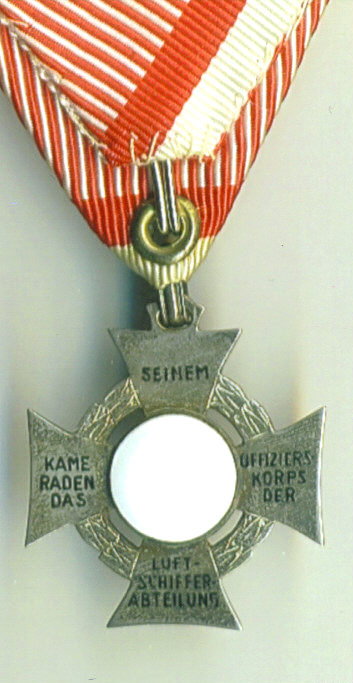
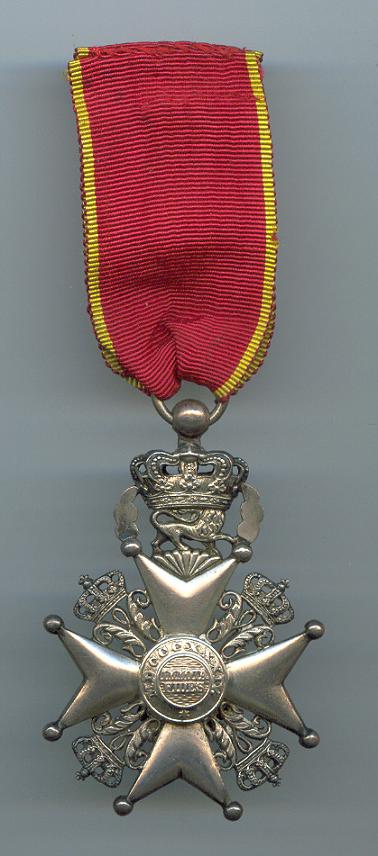
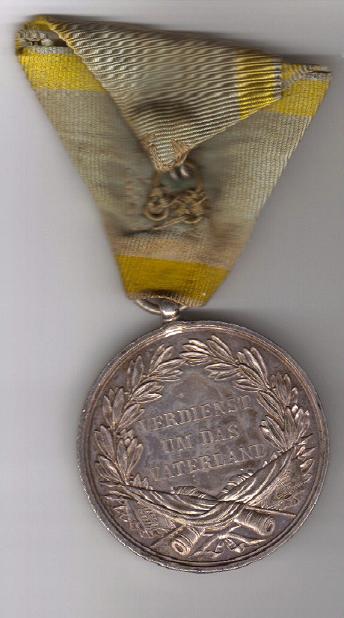
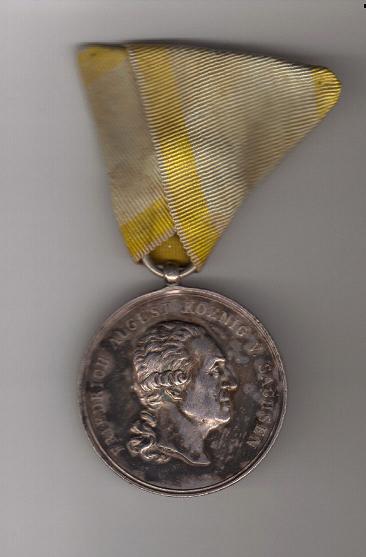
Long Service Decoration
in Austro-Hungarian Empire
Posted
Hello, can any member provide info on the 35th Infantry Regiment during WWl. Is this cross a 35 or 40 year? Dedication in script only a fashion for small amount of time?
Any help is greatly appreciated.
Thanks
Yankee